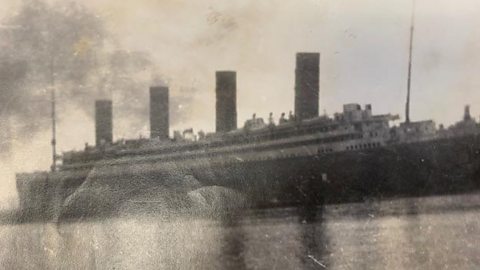Employment
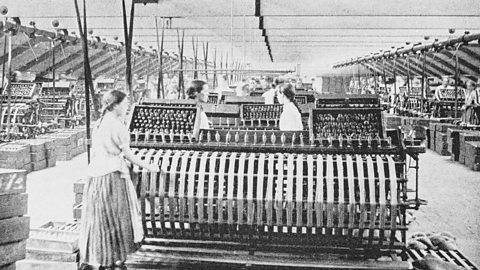
Due to industrialisation Belfast grew rapidly from the 19th Century onwards.
This meant that at one stage it had the single biggest shipyard, ropemakers, dry dock and linen factory in the world.
These fast expanding industries needed people to work in the factories, mills and yards that had sprung up all over Belfast.
Key points about employment in Industrial Revolution Belfast
- The promise of employment meant that lots of people from the countryside moved to Belfast in search of work
- The population rose to 70,000 in 1841 - at a time when the rest of Ireland was suffering from emigration.
- Belfast was one of the few places in Ireland where steady employment could be found.
- During the Famine years Belfast was an alternative to going overseas.
- The biggest form of employment would be in the linen mills - over 70% of this workforce were women and children.
- By the end of 19th century over 30% of the population came from beyond Antrim and Down, the two counties that Belfast lies in.

Housing

The new workers needed to live close to the mills so new houses were built close-by.
This led to the development of the Falls and the Shankill areas.
These two-up two-down terraces were an improvement on the slum dwellings of the city centre lanes and entries, but would have still been small for the larger families of the time.
In the second half of the century, rows of terraced houses were built in East Belfast to house the growing number of shipyard workers.
These tended to be of better quality than the houses of the mill workers as shipyard workers were âskilled labourâ and therefore earned better wages.
Some of the slums in the area beside the old docks had been cleared to make way for the creation of the new docks and the Victoria Channel but the original streets that remained were extremely unhealthy.
Families shared dwellings and there was human waste in the streets.
In 1853 the Rev W.M. OâHanlon wrote about the âindescribable scenes of poverty, filth and wretchedness everywhere.â

Health
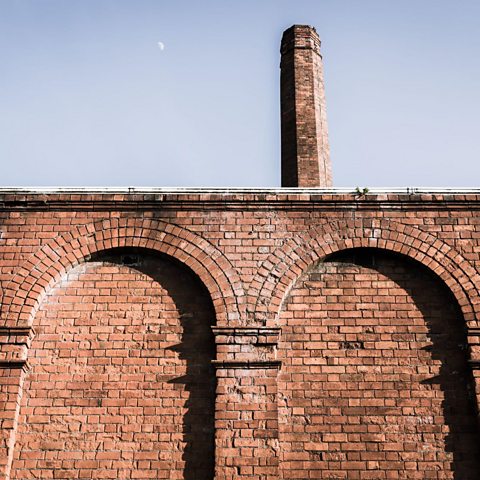
Naturally these conditions and overcrowding meant that illness and disease were easily spread. In the 19th century Belfast endured two TyphoidA disease caused by a bacteria that can spread throughout the body and impact on many organs. It is often spread through contaminated food and/or water. and four CholeraA bacterial disease with severe symptoms including diarrhoea and dehydration. It is often caused by infected water. epidemicThe rapid spread of a particular disease/illness over a very short period of time.
Cholera was especially feared as it spread from person to person and was deadly. In the 1854 outbreak there were 1087 cases in Belfast and over half of those people died of the disease.
The workers of Belfast also faced other dangers to their health.
Mill workers who worked in the âroughing roomsâ, where the flax was broken up, breathed the dust into their lungs.
This caused diseases called EmphysemaA disease of the lungs which leads to a reduction in the supply of oxygen around the body. It can be caused by long-term exposure to dust or fumes. and Tuberculosis (TB)Historically called consumption, TB is an airborne infectious disease that usually infects the lungs. Many died, but even those who didnât were plagued by constant coughing and vomiting.
In the spinning rooms, hot water was poured onto the flax to stop it splitting on the looms. It was like working in a sauna and the constant breathing of damp air caused PneumoniaAn inflammation of the lungs, usually caused by an infection. and other chest infections among the workers.

Pollution and Poverty
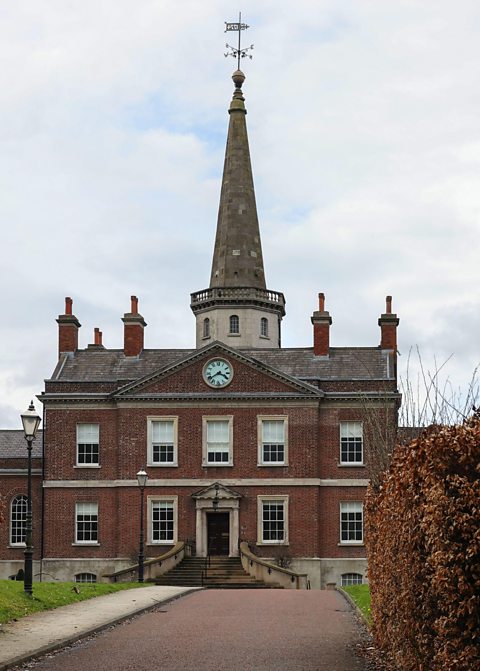
Central Belfast also suffered from pollution.
In the 19th century there was no way to measure the pollution or its effects, but it had a negative effect on peopleâs health.
The huge shopping street, Royal Avenue, was built in1881. It replaced Hercules Row which was where the butcher shops were located.
The 49 shops were placed there so all of the unsanitary animals were in the one place.
Quite often the leftovers and other waste products were simply dumped in the River Farset which caused a range of health problems.
From 1839 onwards there was a workhouseA place where those who were unable to support themselves financially were offered shelter and work. in Belfast. This was for people who were desperately poor and had no way to support themselves.
Conditions in the workhouse were deliberately awful as the government at the time thought people would take advantage of charity.
Not all people had such a negative view of the poor. The Belfast Charitable Society was established in 1752 and opened Clifton House in 1774.
Using donations from individuals and a lottery, it provided education and training for the poor of Belfast in order to help them into employment.

Watch: The effect of Industrialisation on Belfast
DIRECTOR: Standby on the floor.
DIRECTOR: Coming to you camera 2.
DIRECTOR: Cue on 2.
DIRECTOR: Mix-through.
DIRECTOR: Clear the floor.
MAX: Iâm Max Heartrate and this is Knowledge Express. Information faster than a hare on a jet ski. And todayâs topic isâŠ
MAX: The Industrial Revolution!
MAX: Right, way, way, way, way back before 1720, most work was done either by people or animals.
MAX: Then we discovered machines!
MAX: Now we could produce stuff faster and cheaper. Example. Linen. Lovely cloth made for centuries in the North of Ireland thanks to our soggy climate.
MAX: Itâs 1701 and there are loads of families in the countryside growing and spinning flax and weaving linen. They produce 200,000 yards of linen between them. Good work guys? NO!
MAX: By 1773 Belfast is exporting 17 million yards of the stuff. All thanks to machines. Classic industrial revolution â big buildings, big machines, big workforce, big profits and itâs boomtime for Belfast!
MAX: Soon everyoneâs on the industrial gravy train â rope makers, ship builders, distillers, and Belfast is suddenly a big deal. Whoop woo! Party on! Not so fast! Every silver lining has a cloud. People have to move from the country to the city to get jobs. So, dangerous working practices, squalid living conditions, child labour, discrimination against women and environmental harm.
MAX: But hey, thatâs capitalism in the 18th Century for you. The rich get richer and the poor get tuberculosis. Did industrialisation come without a cost? As my Belfast Granda used to say, âCatch yourself on!â
Quiz: Test your knowledge
More on The Industrial Revolution
Find out more by working through a topic
- count4 of 4
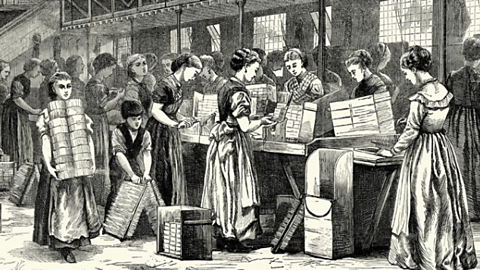
- count1 of 4
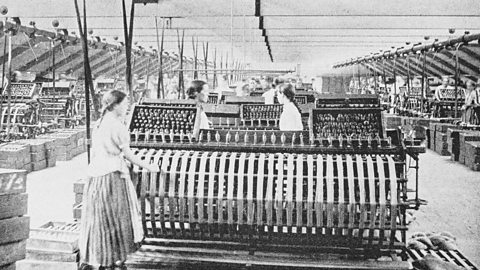
- count2 of 4
